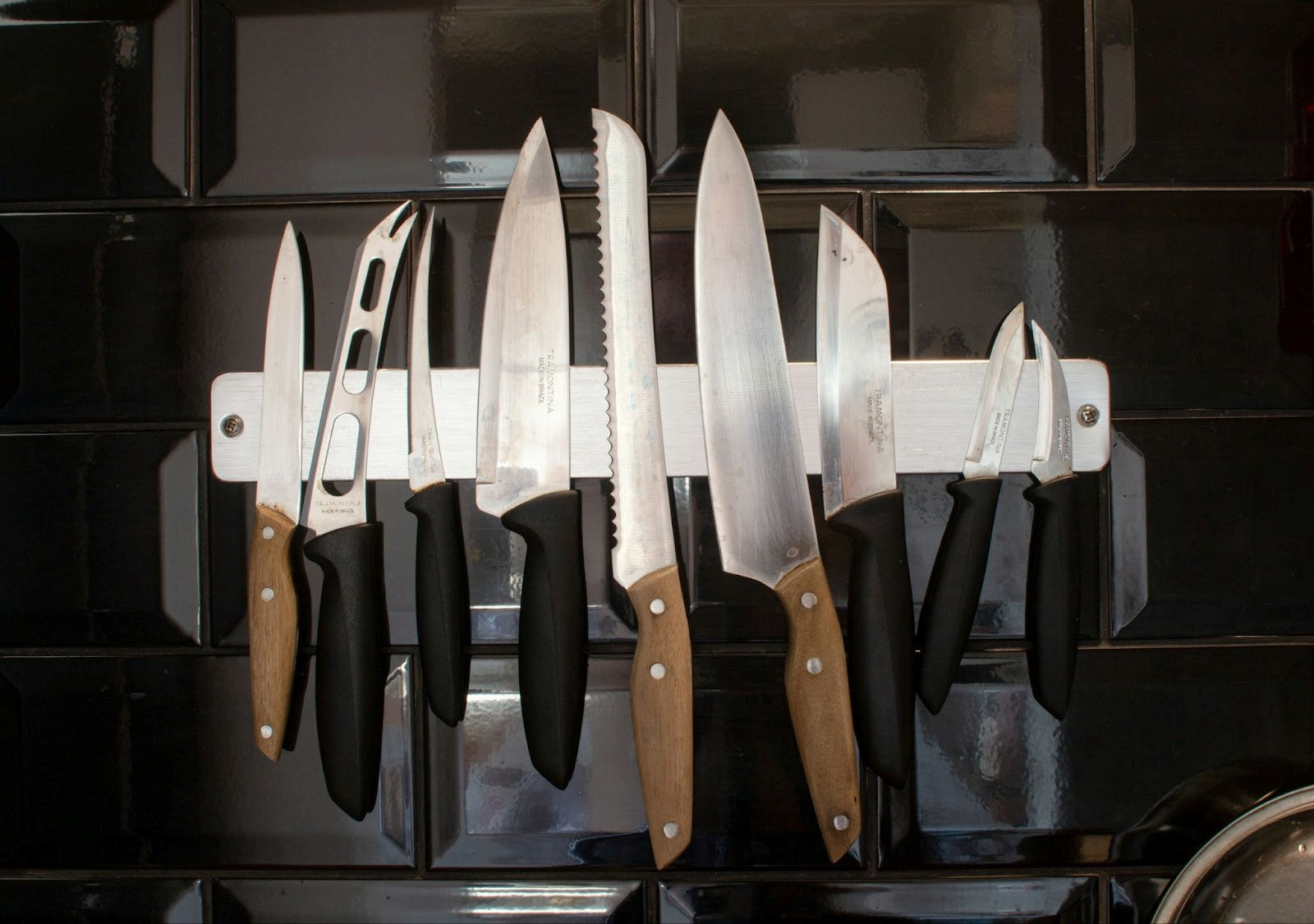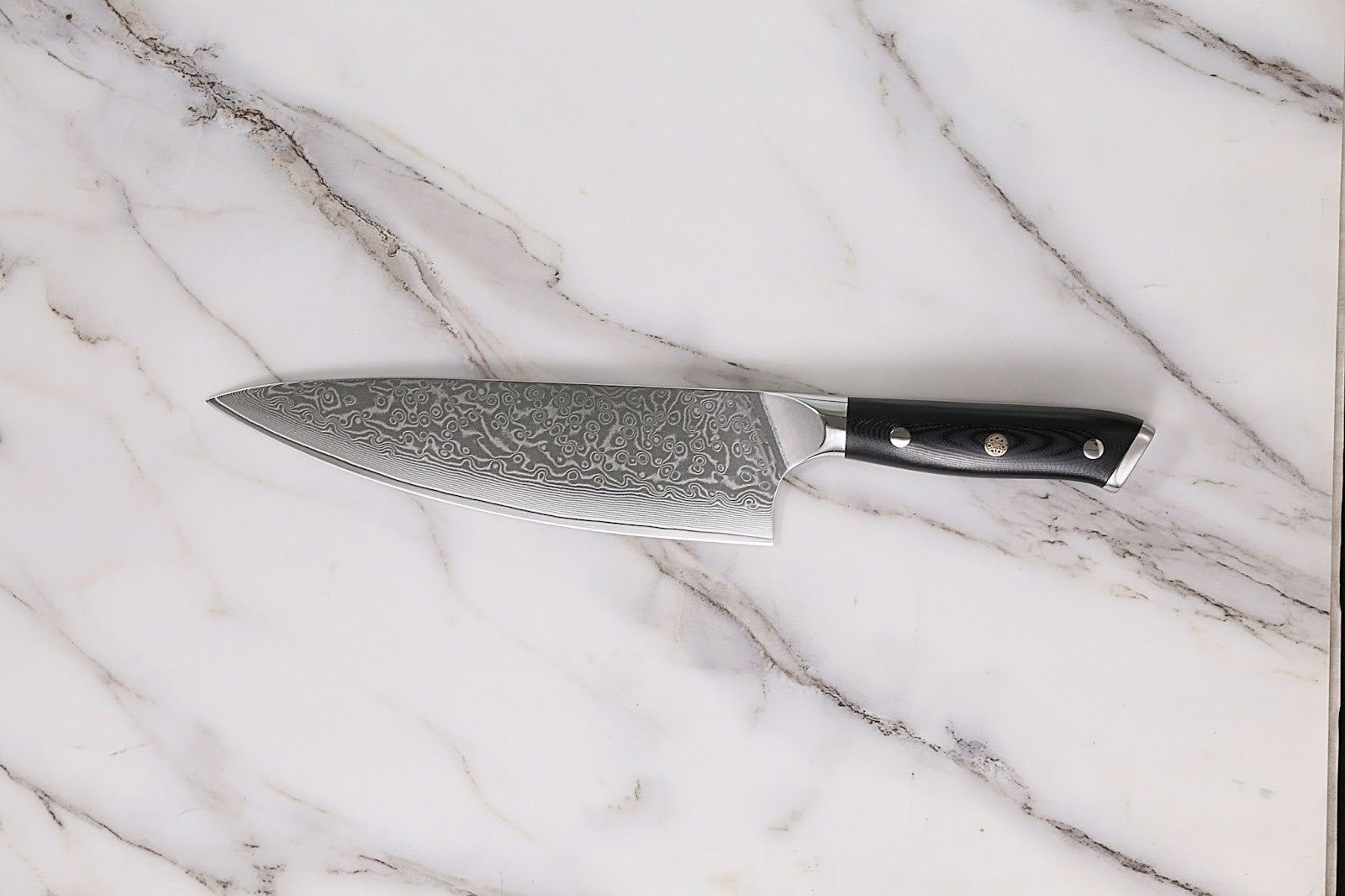Article: Anatomy of a Knife: Comparing Japanese and Western Knife Handles

Anatomy of a Knife: Comparing Japanese and Western Knife Handles
Summary:
Japanese knife handles are crafted from a single solid piece, while Western handles consist of two riveted parts. This difference impacts grip, balance, and performance in culinary tasks. Yokashi Knives provides premium options in both styles, tailored to suit diverse cooking needs.
Understanding the anatomy of a chef knife is essential for anyone passionate about cooking. This article delves into the structural differences between Japanese and Western knife handles, exploring how their designs influence functionality, balance, and durability. Discover the unique characteristics of each style and learn how these distinctions can impact your culinary experience.
These differences aren't just about aesthetics; they reflect deep-rooted cultural and historical influences. For example, Japanese culinary traditions emphasize precision and delicate cuts, which is why their handles are designed for balance and precision. On the other hand, Western cooking often involves heavier, more robust tasks, driving the need for sturdy, riveted handles that can withstand more force.
Main Differences Between Japanese and Western Knife Handles

The main difference between Japanese and Western knife handles lies in their design and material. Japanese handles, often made from lightweight wood, are cylindrical or octagonal, providing precision and balance. Western handles are heavier, made from synthetic materials or steel, and shaped ergonomically for a firmer grip.
The handle of a knife shapes how the entire tool feels and performs. This changes completely how balance, grip, and usability combine. In Japanese kitchen knives, handles are typically single-piece constructions with the tang inserted, which creates a lightweight design that prioritizes precision and control. In contrast, Western knives feature handles made from two parts riveted to the tang, adding weight and durability for heavy-duty tasks.
These differences reflect the distinct cooking styles of their respective cultures, with Japanese knives designed for delicate slicing and Western knives suited for versatile chopping.
While the handle defines how a knife is used, the other parts of the tool are equally important for understanding its functionality. Knowing these parts helps users choose the right knife for their needs and maximize its potential in the kitchen.
Understanding Knicves: The 6 Parts of a Chef Knife
Understanding the parts of a chef knife is essential for maximizing its performance and longevity. From the blade to the spine, each component plays an essential role in how the knife feels, functions, and adapts to various kitchen tasks.
Blade
The blade is the most essential part of a knife, responsible for its cutting performance. In a classic chef knife, the blade is typically made from high-quality stainless or carbon steel, designed to deliver sharp, precise cuts. Its shape and length determine its versatility for tasks like chopping, slicing, and dicing.
Handle

The handle provides grip, balance, and control, allowing for comfortable and safe use. Handles, such as those on an Okami chef knife, can be crafted from durable materials like resin or even natural options like maple wood, enhancing the knife’s aesthetics and functionality.
Tang
The tang is the part of the blade that extends into the handle, offering structural integrity. A full tang, where the metal runs the entire length of the handle, provides balance and strength, making the knife sturdy for any kitchen task.
Edge
The edge is the cutting surface of the blade, responsible for the sharpness and precision of the knife. It can be straight, serrated, or hollow-ground, depending on the intended purpose, ensuring effective performance in slicing, chopping, or detailed work.
Heel
The heel is the widest and strongest part of the blade, located near the handle. In a utility paring knife, the heel offers added leverage for tasks requiring more force, such as cutting through tough vegetables or small but firm ingredients.
Spine
The spine is the unsharpened top edge of the blade, contributing to the knife’s balance and durability. Its thickness affects the knife’s overall strength, making it essential for tasks that require control and precision.
What’s The Anatomy of a Knife

The anatomy of a kitchen knife plays a very important role in its functionality, especially in the context of chef knife anatomy. Both Japanese and Western knives are designed with specific tasks and user preferences in mind. While the blade is often the focal point, the handle design significantly influences balance, control, and comfort. Understanding kitchen knife anatomy highlights the interconnectedness of the handle and blade in achieving optimal performance.
Anatomy of A Japanese Knife
Japanese knives stand out due to their unique handle design. The handle is typically a single-piece construction, where the tang is securely inserted. This design prioritizes lightness and precision, allowing chefs to handle delicate tasks effortlessly. The widest and thickest part of a knife blade complements the handle by offering a fine balance for intricate slicing.
Materials used in Japanese knife handles often include magnolia wood, known for its lightweight properties, or durable composite materials like pakka wood. These materials not only add to the aesthetics but also enhance grip, ensuring ease of use for prolonged periods.
The handle’s lightweight nature pairs perfectly with the thin, razor-sharp blade of a Japanese knife, enabling precise, controlled movements. This makes it ideal for tasks such as slicing vegetables, filleting fish, and preparing sushi.
Key Features of a Japanese Knife Handle
- Single-piece wooden or composite handle
- Hidden tang for reduced weight
- Handle design complements the sharp, thin blade for precision work
- Balance focused on the blade for delicate tasks
Anatomy of A Western Knife
Western knives feature a handle design that prioritizes durability and a firm grip. Unlike Japanese knives, the handle is composed of two separate pieces attached to the tang using rivets. This structure ensures robustness, making these knives ideal for heavy-duty tasks. The heel of a knife, a significant component in Western blades, supports this functionality by allowing for powerful chopping and slicing motions.
Materials for Western knife handles often include hard plastics, resin composites, or stainless steel. These materials enhance durability and provide a non-slip grip, essential for tasks that require more force. The anatomy of a Western knife handle is tailored to meet the demands of cutting through dense ingredients like meat and root vegetables.
Western knife handles work in tandem with the thicker, more durable blades, offering exceptional versatility. From chopping onions to breaking down poultry, Western knives are engineered for resilience and precision.
Key Features of a Western Knife Handle
- Two-piece handle secured with rivets
- Full tang for increased stability
- Designed for balance between the heel of a knife and the handle
- Materials that prioritize durability and grip
Get the Best Knives with Yokashi Knives

At Yokashi knives, we are dedicated to providing premium knives that cater to diverse culinary preferences. Whether you’re drawn to the precision of Japanese chef knives or the durability of Western models, our collection offers expertly crafted options to suit every kitchen need. Each knife is designed with a focus on quality, performance, and elegance to enhance your cooking experience.
Yokashi knives combine ergonomic designs with durable materials to ensure long-lasting efficiency. From authentic Japanese blades to versatile Western-style knives, our range delivers unmatched quality and balance. Explore our collection today and find the perfect knife to elevate your culinary creations.
Choosing the Right Knife for You
Understanding the differences between Japanese chef knives vs Western designs helps you make informed choices for your kitchen needs. Each style has unique advantages, from the anatomy of the handles to the materials used. Yokashi combines the best of both worlds, offering expertly crafted knives that combine tradition and innovation. Discover the perfect knife for your culinary adventures with Yokashi. Explore the collection now and transform your cooking experience.

